It’s no secret that Malaysia Airlines had a terrible 2014. So terrible that the fate of the airline hangs in the balance. The government, tired of writing blank checks to keep the airline afloat, has demanded restructuring. Hiring Christoph Mueller (of Aer Lingus hatchet-man fame), they were, finally, not going to pull any punches.
Part of this is an impressive (rumored) fleet disposition. Winding down of the entire 777 fleet by the end of next year, complete dissolving of MASkargo, and the biggest elephant in the room of all; removal of their A380s.
Can becoming a regional airline centered around the A330 save Malaysia Airlines? I’m not hopeful, but that’s not what I am here to talk about today.
I want to discuss where the planes are likely to go.
Let’s start with the 777-2H6/ER fleet, the oldest of which was assembled in 2001. Fourteen years used to be only middle-aged for a 777, or any aircraft, but in the era of today’s market-shortened life-cycles, it is ancient. There are two ways this can go. If the aircraft are in great shape, with relatively low-cycle counts, they may find another operator.
If the Rouble was as high as it was two years ago, and Russian tourism demand was still strong internationally, Transaero would be an obvious candidate to take them. The economic climate in Russia is improving from the depths the West drove it to late last year. Thing is, Transaero has brand-new wide-bodies destined for their fleet within the next few quarters. While I look forward to flying on their new equipment to Simferopol, it does not bode well for any second-hand wide-body acquisitions within the next year.
There is a bizarre internet myth that Delta loves to buy second-hand aircraft from anyone. While they have done this with the MD-90 and the 717s, other than the wide-bodies acquired through the Northwest merger (which doesn’t really count), the last used wide-body deal was to acquire some Gulf Air 767s. Even though Malaysia’s 777s carry Trent 892s (similar to Delta’s), the 777 is way too big for Delta these days. Not going to happen.
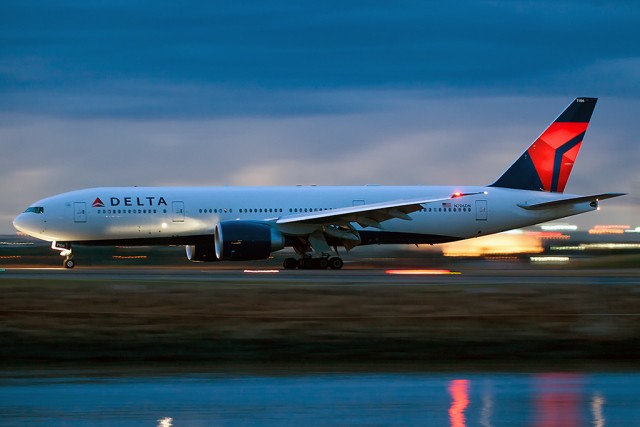
Delta does buy second-hand aircraft, but 777s are too big for them these days – Photo: Bernie Leighton | AirlineReporter
The real hope for these airliners are with ACMI (wet lease) operators like HiFly or EuroAtlantic. Even then, it’s unlikely as they have plenty of wide-bodies already. They are also rumored to be perpetually teetering on the edge of a financial abyss.
Realistically, these aircraft are bound for the American desert or Bruntingthorpe, UK. I almost guarantee you that they are worth more as parts than extant.
On to the 747-4H6F/SCD. These are only around nine years old. Freighters traditionally have a lower cycle count than their passenger peers, and these ones have spent most of their careers moving animals. Air cargo is booming right now due to a series of longshoreman and other port worker strikes. No American cargo airline is likely to pick them up. Atlas would, likely, consider it if they could place the aircraft in a long-term wet-lease right away, but I do not know who they are speaking to, so I can’t tell you if they will.
Either way, these aircraft have a bright future moving cargo for someone as they will be cheaper to place back into service, even if short-term, than raiding the desert for a frame stored whilst air cargo demand was negative a few years back.
The A330-223Fs are a strange case. They are the only A330-200Fs that have Pratt & Whitney engines. The A330-200F has always been an odd aircraft – its timing of market entry made it a relatively poor-selling entity, and it’s more expensive than grabbing something idled in the desert. It has a lot of pros, but pros that only pay off long-term. These aircraft are too new to scrap, but also are not going to be attractive to the majority of current A330-200F cargo operators. The only existing A330 freighter operator I can think of showing interest in them is Turkish. After all, they have operated A330s of every available engine type.
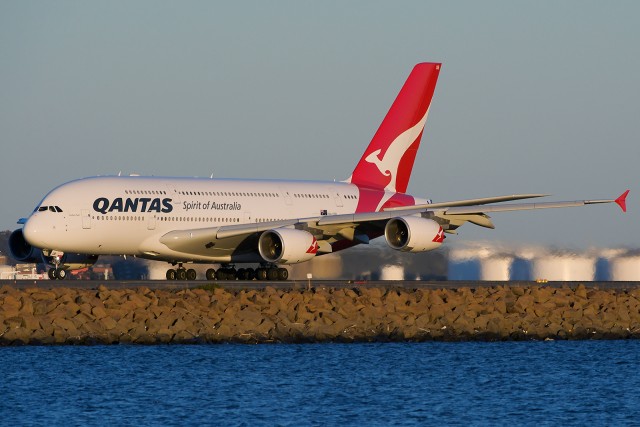
Qantas is an A380 operator, but is unlikely to acquire more – Photo: Bernie Leighton | AirlineReporter
Too many people are not supporters of the A380. It’s the weirdest thing, as it’s a great aircraft. Many would like to see the failure of Airbus and have these frames parked in the desert, never be sold again, representing the superiority of the Boeing 747-8I. I love the A380 and actively seek it out when I fly.
But where will Malaysian’s go?
The awkward fact is that these aircraft have Rolls Royce engines. Emirates, while switching to Rolls Royce for a tranche of A380s down the road, only has Engine Alliance-powered frames. Qantas hasn’t the finances or the need to sustain any additional A380s, despite their Trent 900s. Qatar Airways has a reputation to keep up; they would never take second-hand aircraft.
Lufthansa, while in possession of a Rolls Royce fleet, is done with quad widebodies. The 777-9 order more or less confirmed this.
British Airways, in my opinion, needs more A380s. Do they agree with me? Unclear. One thing is certain, however; Dublin is more likely to become Heathrow’s third runway than for there ever to be a third runway at Heathrow proper. London will never stop being an overcrowded mess with demand ever-increasing. Any airline that calls London home really ought to look into the A380 for its highest performing routes.
Thai Airways International. Well, no. Just no.
Asiana would be an airline that may take some, but not all, of the Malaysian disposition. They have engine commonality, they have a home airport that can easily accommodate A380s, and they also have a few extremely high-density routes that can warrant A380 upgauging on top of their existing frequencies and operation with the type. However, Asiana is happy to be a small airline – they have no aspirations other than being a competent, quality Korean airline.
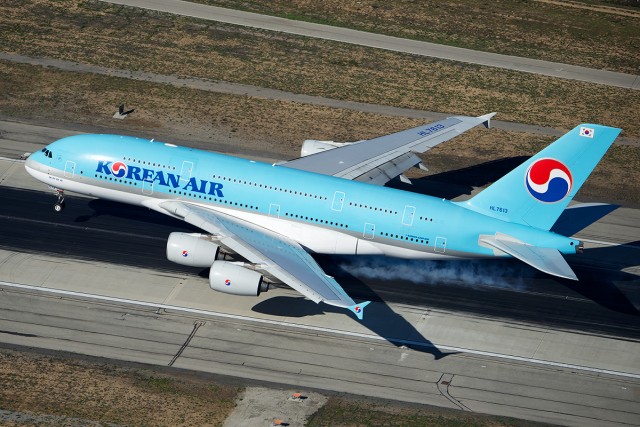
Korean Air uses A380s on its highest-density and highest-yielding routes – Photo: Bernie Leighton | AirlineReporter
Korean Air just doesn’t have the right engine type. Korean also has a fleet of 747-8Is destined to arrive. Incheon may be a great hub, but it is a great hub for China, Japan, and some of Southeast Asia. None of these connection opportunities scream the need for more A380s.
Both Korean airlines have a great business model, but their business model is not based off being a super hub with nothing other than A380s.
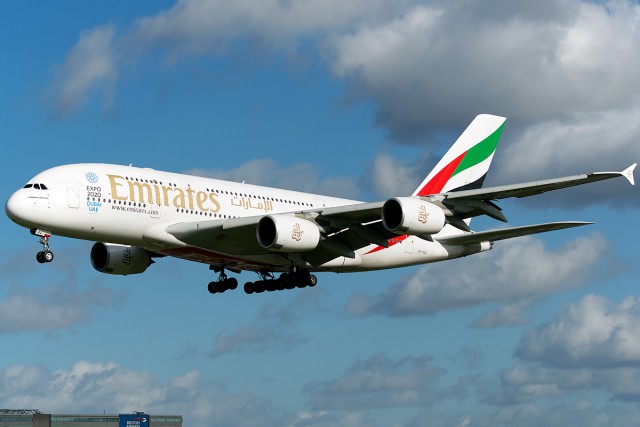
An Emirates A380-861 on approach into London Heathrow Airport – Photo: Bernie Leighton | AirlineReporter
But wait. Does the engine type really matter? One of the A380 test frames was powered by Rolls Royce Trent 900s. Where did that frame end up? Emirates! How? While it is not as easy as on the 787, you can change engine manufacturer on the A380, if absolutely needed. This is a case where six A380s might not be enough to motivate Airbus to change out the engines. It is not outside the realm of possibility that Airbus would eat the cost of engine transition to find these aircraft a new home.
If the engine swap were to happen, this opens up two potential operators. Emirates, because they can’t get A380s fast enough and would happily reconfigure them into a high-density two-class configuration. Or, perhaps, Etihad.
Etihad is almost infinitely less likely. Not because they dislike the A380, but because the current Abu Dhabi airport can’t handle any more. When the new one opens, I am sure more A380s will appear, but these birds would be a massive public relations albatross if they were stored in Lourdes until the new airport opened. Airbus will accept this, if they have to, but I do not think they need to.
Everyone used to think that Turkish Airlines was a logical A380 customer. I still think they are, but their CEO keeps throwing cold water on the argument. He, of course, knows more than me. He has a point, too. The current Istanbul airport could barely handle one A380, let alone a fleet. The new Istanbul super hub that is about to commence construction will be A380 heaven, but that doesn’t place the used frames short-term. Turkish knows they need a Very Large Aircraft, and they will decide on one. I still think what the CEO is saying is posturing to establish preferential pricing and we’ll see Turkish A380s by the end of the decade. Having said that, Turkish taking A380s – effectively tomorrow – would be a massive financial and logistical undertaking that I am not sure they want.
So, solving absolutely nothing there, it’s time for me to put on my crazy hat and tell you where I think these A380s should end up!
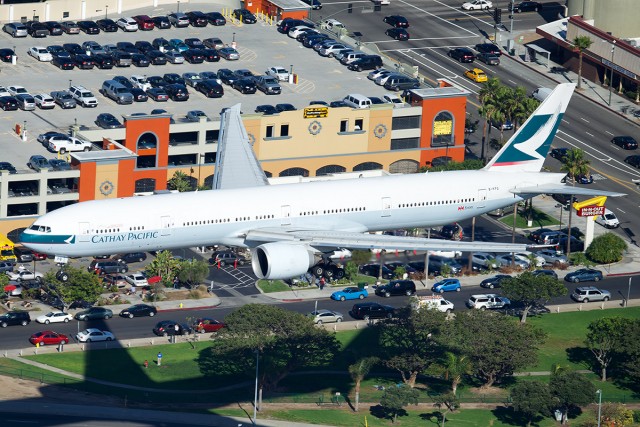
Cathay Pacific loves the 777, but might need something larger – Photo: Bernie Leighton | AirlineReporter
First candidate airline of “if Bernie was their CEO” would be Cathay Pacific. This is an airline that has always been on the fence about very large aircraft, and going forward is maxing out with the 777-9. Thing is, Hong Kong is not going to get any less important economically. Favoring frequency over capacity is a great strategy; it does allow for maximal price discrimination and yield. Unfortunately, it’s not like Southeast Asia’s air market is going to get less competitive.
The customers that spill away from Cathay Pacific are no longer not flying because of their own cost-preferences – chances are, they’re taking the competition on a similarly-timed flight because their first choice was full. They didn’t wait to fly the later Cathay Pacific flight because they had to be in Point Y by X o’clock to close a deal. They flew another airline with more seats.
Now, I know that Cathay cannot sustain an A380 on all of their long-haul routes, and that six is a very small subfleet for them. Especially when these are older A380s that may not be capable of flying HKG-LAX nonstop all year. That doesn’t mean that the correct incentives from Airbus would not allow them to work excellently on Cathay’s more lucrative, highest-demand frequencies into major European and Asian centers. Admittedly, the A380 is not as much of a freight train as the 777s are proportionally, but I am not privy to Cathay’s cargo vs. pax figures so I can’t decide if that’s a make-or-break factor.
The other potential candidate in my crazy speculation is one of the airlines operating out of the Republic of China. Not Eva, obviously – Eva will never operate something larger than the 777 again.
Government-owned China Airlines, however, not only likes to play politics, but is going through a very public transformation to become more than just “Taiwan’s airline.” There are some routes where the A380 makes sense into Taipei. Don’t believe me? Taipei’s airport authority is going to have their international airport A380-ready by the end of this month. For whom? They have not said. Usually that means an endemic customer, but it could also mean future-proofing. That area of the world is only scheduled to grow.
No matter what happens, these A380s will be placed – it is Airbus’ imperative, and necessary for the health of the program. What do you think?
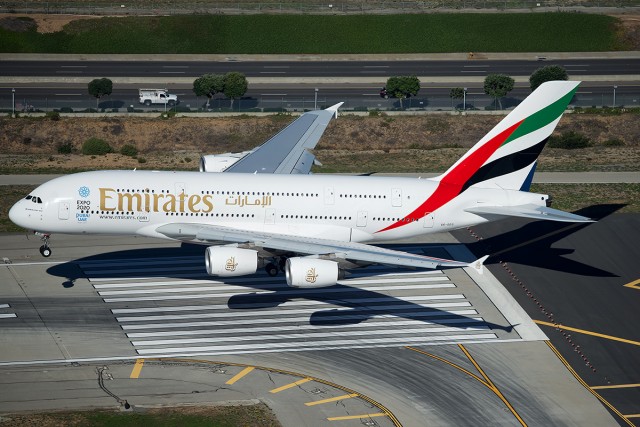
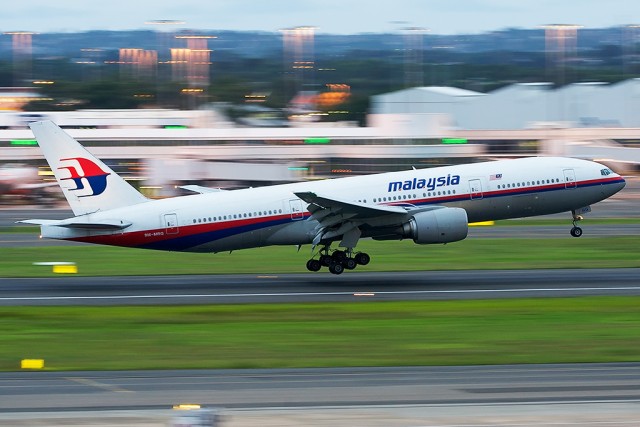
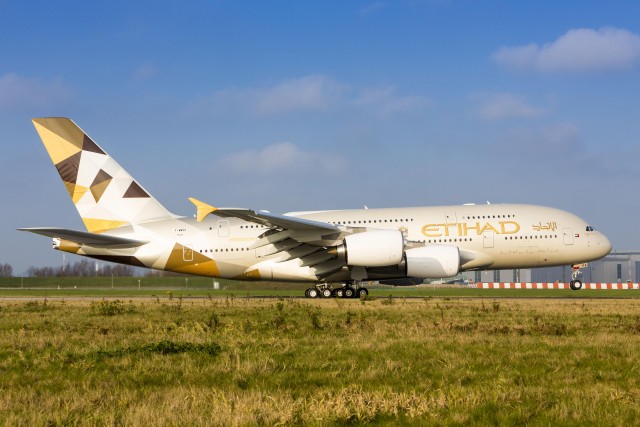
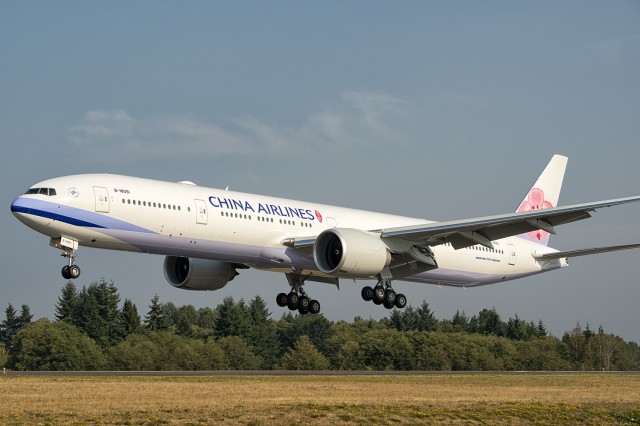
Really fascinating article – wonder if Air France wouldn’t be interested in the A380s.
With the massive discounts Boeing is giving on new first gen 777s I can’t imagine the market for Malaysia’s are good from a seller’s perspective. Could they see life as a cargo conversion? Would American/US Air be interested in any of the 777s? What about Turkish – with their ability to not need the high-temp mods to their fleet and the same range from Istanbul to the rest of the world that the gulf carriers have could they be interested in snapping up some cheap A380s?
One nit pick- the West didn’t destroy the Russian economy. The plunging price of oil did more damage than the sanctions and as you likely remember the sanctions were in response to the invasion of a sovereign country.
Airbus was initially looking at a freighter version of the A380, but figured there wasn’t enough for a market. Maybe there will be one in the second (or third or tenth) hand market.
David, AirlineReporter
Interesting read on the A380. This scenario might just hold what the future prospects for the A380 are when it comes to second hand operators. That market might just be too small and fractured by the 380’s sheer size and limited operational realities long term.
I think that there will be a market. Just with the 747 or other, more costlier planes, airlines have made great use for them long after the airline that purchased them were done using them.
David, AirlineReporter
I can see those A380 in Madrid Barajas under Iberia colours. The airlines restructuring measures are almost finished now and the airline income is under control. They had to give up a lot of traffic to competition, they are ready to recover and reconquest leadership between Europe and Latin-America. There are high density routes like Madrid-Buenos Aires served with A340, I fleet that needs to change soon. They are Airbus fans and Barajas airport can easily handle big planes.
Because the plane is fantastic but only on a certain city pairs and that one carrier dominates the share of deliveries makes it easy to market against. Who would attempt flying an A380 on a crowded route when you could throw a 787, A350 or 772 to test the water or time shift your schedule? Alternatively, the rise of EK across the globe means carriers have to be cautious when going head to head agains the Middle East Monster. Aside form LHR or FRA, is a carrier, especially in NA, going to schedule an A380 knowing EK will schedule around your flights and squeeze you? There just is not the lift around the word to compete against EK. .
What may kill this plane is the success of one carrier and that it’s perfect fit for so few routes.
I like the idea, but getting your hands on a 787 or A350 will take a long time. If you are willing to take it mostly turn-key, one can get the A380 much quicker.
David, AirlineReporter
True. then throw a 777 or 767 on a route to serve it and see how it goes. Those are true turn-key planes and way less overhead to worry about. If a carrier is worried about flying a used 777, they would be flying the A380 now. With an A380 (and 787/A350 for that matter) you have the issue of finding crews who are trained and ready to fly or serve passengers, This second wave of A380 airlines is the biggest nut Airbus has ever had to crack and it’s because the first wave was so weak. This is fascinating to watch.
Cathay seems the most sensible to me. Look at their HKG – LHR schedule and notice all the 777s leaving next to each other (eg 3 within an hour on Saturday night!) They could try out A380 service at a considerably cheaper airframe price, and if it doesn’t work out the exercise will have cost quite a bit less than new airframes.
There are two overlooked and quiet candidate airlines in Asia who may benefit from acquiring these A380s. An aggressive growth strategy is being implemented in the Philippines and their national carriers, Philippine Airlines (PAL) and “no frills”, Cebu Pacific. PAL has acquired used planes in the past (A340s from Iberia and Kuwait, I think), so it wouldn’t be out of place for them to do so again. PAL currently flies MNL to LAX (10x week) and SFO (9x week), using a mix of 777-300ERs and A340s, a daily A380 to each destination would make more sense. As would getting rid of their older A340s all together(no personal AVOD) and switching those out for 777-300ERs on their newly re-opened routes, MNL-LHR and MNL-YVR-JFK, the latter would really benefit from not having to stop at YVR, and then PAL would have a monopoly on that direct route.
The congestion at Manila’s main airport, Ninoy Aquino International Airport (NAIA) or MNL, is also well-know in the region. And yet their number of passengers grows every year. The use of a A380 would help alleviate some of that congestion.
Both Philippine Airlines and, it’s national rival, Cebu Pacific, have been growing their routes since the nation’s carriers have been placed back to Cat 1 status by the FAA. Cebu Pacific seems to me as the “Norwegian Air of the Pacific”, they’re opening their first route in the U.S. to HNL, but their new A330s can’t make it to the profitable markets on the U.S. West coast, currently monopolized by their rival, PAL. Either the 777-200ERS or A380s from Malaysia Airlines would allow Cebu Pacific to make the transpacific hop.
As a Filipino, I wouldn’t mind seeing either, but there are a couple of flaws with the ideas.
– Biggest single issue: MNL is not capable of regular A380 operations. Currently, no gates have been modified for it, and the airport authority has said there are taxiway clearance issues. It can do irregular operations; EK did a one-off once and both Qantas and Air France send their A380s to the local Lufthansa Technik hangar at MNL for maintenance. But regular daily operations? No way.
– One magic word: cargo. The A380 is not a great cargo plane, and PAL passengers are fond of carrying a lot of cargo for relatives back home. This is why PAL frequently made technical stops at Guam with their 744s on the SFO/LAX-MNL routes… supposedly even at MTOW they couldn’t carry enough fuel. Those stops have gone away with the 77Ws/A340s on the route.
– Non-stop MNL-JFK wouldn’t work. Distance-wise, it’s almost as long as the Qantas DFW-SYD pair… and the O&D trafic at both ends isn’t high enough in yield or volume to make sense. MNL premium traffic is sufficiently low that we’re sort of like Cairo/Colombo/Casablanca – ex-MNL fares for business are low.
– Cebu Pacific is losing its shirt on long-haul, period. I doubt there’s any appetite for the risk an A380 fleet would represent.
So no, I can’t see either of the Philippine carriers with the A380 soon.
The advantage PAL has over the other carriers, and major reason passengers use PAL, is their direct flights to MNL from the U.S. (SFO & LAX), which they have the monopoly on. For a passenger from the NY area, there is no advantage to take PAL (old A340s) over a competitor, Cathay for example, and if Cathay can use their 77Ws to HKG direct from JFK, EWR, & BOS., PAL can certainly use it for direct JFK-MNL…she’s a strong bird (even filled with all those balikbayan boxes).
It all depends on the financials of Malaysia Airlines. Selling the excess will generate cash flow to cover the gap between payments to victims’ families and insurance from Lloyds. Wet lease can dress up the financial – income from leasing and capital equipment depreciation. Operators mentioned are interesting, the urgency to acquire either probably need to be examined after weigh in the trend of crude oil. CI in Taiwan (ROC)was mentioned as a wild card. Its financial has improved in recent years with services to China, yet it has reduced trans-Pacific flights. Its current delivery of 777 will replace aging 747. They have placed order of A350 I doubt they will place 380 in the fleet in near future at junction of training for new equipment.
Well,I’d like one myself, Will it fit in a 2 – Car Garage ????
You haven’t even mentioned the two 380’s hidden in a hanger in toulouse that were destined for Skymark!
They don’t have interiors but they have been wired for all economy seating and will cost a fortune to reconfigure., They both have there engines but only one has been test flown.
I’m pretty sure Airbus will be more interested to find buyers for those aircraft before sweating blood to remarked Malaysian.
i’ve read a number of pieces comparing the cargo potential for the 380, with the 747-400 or 800, in a conversion. AirBus did flirt with a “from the ground up” purposely built 380-F before dropping the idea. The 380 has little conversion potential because AirBus eroded completely on the side of carrying massive numbers of people leaving the airframe way too weak for the purpose of cargo carrying. There are zillions of 747-400s being retired that can easily be turned into freighters without a massive amount of strengthening, needed with the 380. I agree with the BA idea, they could put the 380 on many more routes. PAL, no way, Manilla is a terrible airport, much work would be needed to deal with the 380, certainly there are other needs more urgent than building a 380 gate. It may be an incredible aircraft, I would love to see AA or DA pick up a few, but we have to look at the possibility, that its production is at an end. Tim Clark is throwing a tantrum, holding his breath, until AirBus announces a 380-neo program, he’s done buying the conventional offering. The guy also wants a ground up 350-neo, in the way that the 787 was, with all new wings, interiors and cockpit. Will AirBus borrow $20-$40 billion to please their biggest customer with little hope of selling enough aircraft to ever cover their costs? Did AirBus really want to build the 350 to begin with? Having ZERO new orders for the 380 in two years, might drop the book values of the MH models until they become a fire sale bargain.
hi,
any idea what the a380s will sell for?
What about Air Canada for the 380’s?
They’re expanding big time with new routes (Brisbane just added along with Delhi & Dubai)and YYZ already accomodates the Emirates A380 3x a week.
Do you Need legit loan? Do you need Business or Personal Loan? contact us Full Name: Loan Amount: Duration: Country: via E-mail Us: mr******@*******er.com
Flew out of KLIA today an noticed that 5 of the 12 B777 on the MAS fleet are sidelined and have had their livery removed, thats a huge chunk of the fleet grounded
Horvat, just who turned thirty earlier this month, as well as Gaudreau, 21, each of those appeared inside their very first NHL playoff activity for Calgary”s 2-1 earn Wednesday night.